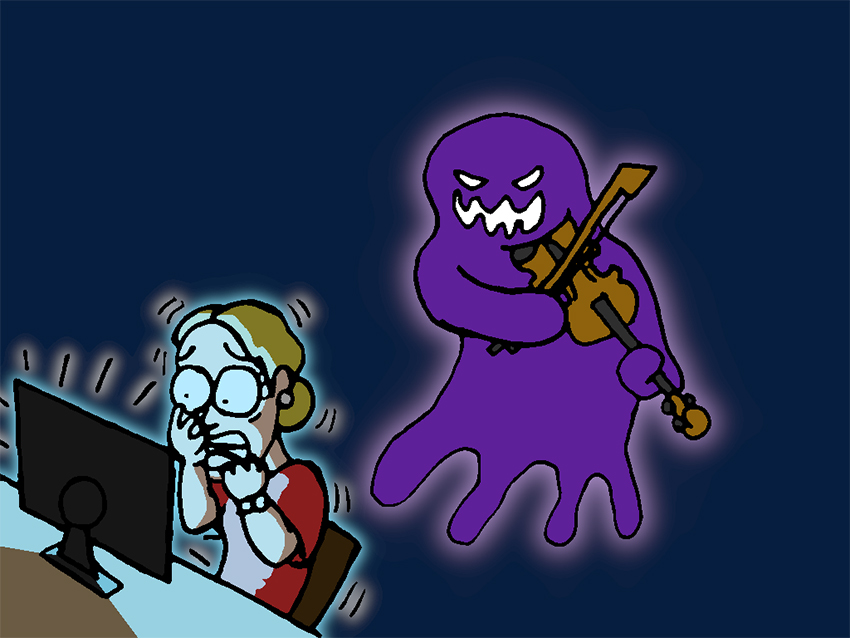Scary movies have ominous sounds that give us goosebumps. Our physical dislike for spooky sounds in horror films is due to psychological cues and a part of our inner ear called the basilar membrane, psychology graduate student Taylor Mezaraups said.
The basilar membrane is a coiled piece of tissue inside our ears that help us break down the different frequencies we’re exposed to whenever we hear a sound, Mezaraups said.
There are certain characteristics of music that naturally sound more ominous. Songs are often created with major keys, which produce more happy and cheerful music, Mezaraups said. However, sounds we hear in horror films are less pleasing because they’re often created using minor keys, which sound more melancholy and dark. For example, the ominous piano pluckings of the Halloween Theme by John Carpenter are in A minor.
She said sounds in horror films also have closely overlapping notes, creating interference that can be grating.
“When you play two notes that are really close to the other, but not completely overlapping … it creates interference,” Mezaraups said. “So it’s a displeasing sound to us.”
These displeasing, or dissonant sounds, are often found in horror films to warn us that something bad will happen and to evoke fear, Mezaraups said.
Dissonant sounds can also be found in nature, such as the sound of a tree branch falling or the screech of an animal, said psychology graduate student Tyler Larguinho. Whenever a mother bird hears her chicks chirping, it evokes her fear response because she thinks they’re in trouble. The same principle applies to a human mother and baby whenever the baby cries because of discomfort, Larguinho said.
Dissonant sounds are also known to be musically unorganized, which can be another reason why they’re less liked than consonant sounds, Larguinho added.
“Dissonance, because it’s so inharmonic, usually evokes a negative emotion, such as fear or anxiety, whereas consonant sounds would evoke happy emotions because it’s harmonic,” Larguinho said.
Mark Castaneda, a radio-television-film senior, said he enjoys watching horror movies with his favorites including “Grave Encounters,” “The Conjuring” and “Paranormal Activity 3.”
“These movies are great at building tension without relying on cheap jump scares,” Castaneda said. “It’s hard to explain what makes a horror movie great, but it’s usually the ones that bring something new and refreshing to the table.”
Castaneda said audio plays an important role in creating feelings of suspense. Interestingly enough, Castaneda said when he watched a horror film called “A Quiet Place,” in which there is almost no sound, the absence of sound was also effective.
“The lack of dialogue puts more emphasis on natural sounds of the world,” Castaneda said. “Very little dialogue and noise overall, but the few sounds that are present throughout the film are powerful.”
Mezaraups said we are almost always surrounded by sound, even if it’s ambient sound. A film like “A Quiet Place,” where there’s no sound, makes us believe something is wrong, causing us to feel increasingly tense while watching the film.
“If there are no environmental sounds, that indicates something is wrong,” Mezaraups said. “It’s the contrast.”















